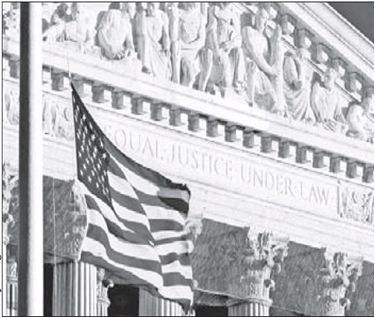Supreme Rulers

One of President Obamas most important duties and privileges as president is to nominate the judges that serve on the United States Supreme Court, the highest court in the land.
Congress, which retains the power to either confirm or deny the presidents nominations, investigates the nominee and holds public hearings during which the candidate is investigated and subjected to intensive interviews.
There is a reason that the job interview to become a Supreme Court justice is so tough. It is, by many measures, one of the most important jobs in the country.
The United States Constitution, the document that defines the American form of government and the basic laws of the land, provided for the establishment of the Supreme Court a panel of judges charged with interpreting the Constitution.
On September 24, 1789, 222 years ago, Congress passed the Judiciary Act, the legislation that created the Supreme Court. The Supreme Court is the only court established by the Constitution. It determines whether the laws passed by Congress and state legislatures, the rulings of lower courts, the actions of state and local governments, and the policies enacted by the president and his administration, comply with the Constitution.
Supreme Court rulings are final. You’ll often hear of a case making it all the way to the Supreme Court. That means that the case has been heard in lower courts, but that the people involved have disagreed with the rulings, and appealed those rulings, asking a higher court to issue a decision different from the lower court. There is no appeal beyond the Supreme Court. Therefore, the rulings set the laws of the country.
Whether or not a law or policy is Constitutional is often the source of intense and heated debate. Supreme Court Justices are relied upon to put their own personal views and politics aside and rule based purely on the Constitutional questions in the cases before them.
Thousands of cases appeal to the Supreme Court every year, but the Justices only rule on about 150 of them. The Courts motto is Equal Justice under the Law, and most of the cases the Court rules on addresses this ideal. The original Court had six justices, with John Jay serving as the first Chief Justice. That number was later expanded to nine, and remains so today.
In 1967, President Lyndon Johnson appointed the first African American justice, Thurgood Marshall. In 1981, President Ronald Reagan appointed the first woman to serve on the court, Justice Sandra Day O’ Connor.
Supreme Court justices serve for life unless or until they choose to retire. When Congress approved the appointment of Justice Elena Kagan last year, she became only the 112th justice to serve on the Court in 221 years.
Todays Court is comprised of both justices of diverse backgrounds: Chief Justice John Roberts and Associate Justices Antonin Scalia, Anthony Kennedy, Samuel Alito, Stephen Breyer, Clarence Thomas, Ruth Bader Ginsburg, Sonia Sotomayor and Elena Kagan.

